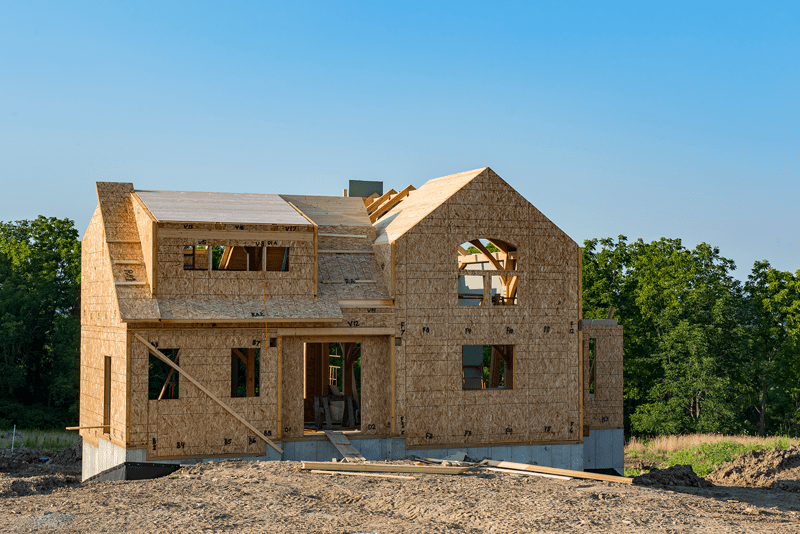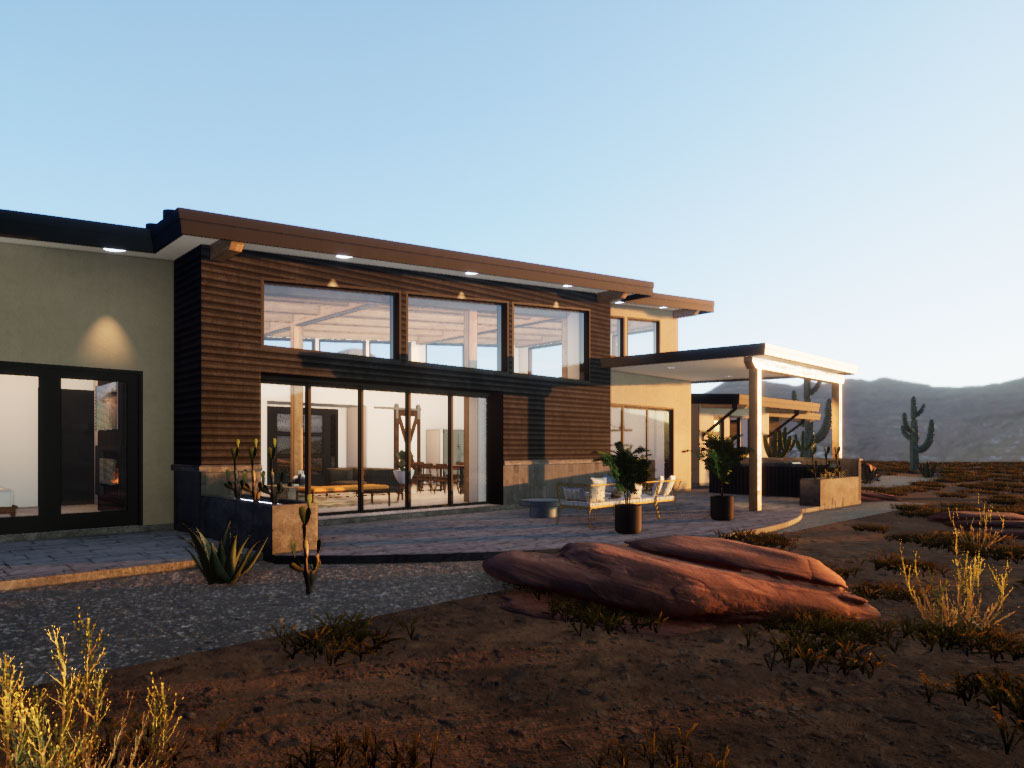Structural Insulated Panels
Your Guide to Understanding Structural Insulated Panels, or SIPs
If you’re interested in timber frame homes, you’ve likely stumbled across the term “structural insulated panel.” A structural insulated panel, called SIP for short, is an important element in timber frame home construction. These panels are a key part of the timber frame building system and give timber frame homes exceptional energy and construction efficiency.
How do SIPs fit into timber frame home anatomy?
All those brawny, gorgeous timbers — posts, beams, and trusses — you see in a timber frame home serve a functional and aesthetic purpose. They are the home’s frame and support system. Timber frame homes are erected with fewer pieces of wood, but each is large, strong, and stately. In contrast, the roof system or upper floors of a conventional “stick” home are distributed across hundreds of smaller pieces of lumber, which are typically hidden inside the walls and ceilings. In timber frames, structural insulated paneling is a logical choice because there is so much uninterrupted space between each timber. This space allows SIPs to lock together seamlessly, without being disrupted by wall studs – the many vertical 2 x 4-inch beams that support the frame of a conventional home.
What about cost?
It’s true that a timber frame home initially costs more money than a comparable conventional home. But stretch the timeline of total costs over the years and timber frames quickly become a better investment for your pocketbook and the environment. Timber frame building systems, which includes SIPs, require less labor onsite, less construction waste, and less cost associated with installation. The budget is concentrated into craftsmanship and quality, making them high-valued homes. In conventional homes, builders are using hundreds of pieces of lumber, which increases the likelihood for human error. Sooner or later, these small errors can bloom into costly issues. Additionally, the use of inferior products that initially keep the construction expenses of a conventional house lower will eventually cost the homeowner more due to poor performance and shorter life spans. In comparison, timber frame homes can last hundreds of years. Their exceptional energy efficiency carries a lower carbon footprint and can save homeowners thousands of dollars in heating and cooling bills.
Try our Dream Home Budget Calculator for a free cost summary of your dream home.
What kind of SIPs does Woodhouse use?
SIPs are a go-to material for timber frame manufacturers. Our panels, however, stand above the rest. Most SIPs are made with expanded polystyrene (EPS) for insulation. Woodhouse uses special SIPs made with 90% polyurethane (PUR) foam that has been injected, in liquid form, between two panels ensuring uniform distribution. Our panels utilize a locking mechanism that allows contractors to install them quickly and easily. These panels are thinner, which translates to increased interior square footage. Even more amazing is that these thinner panels made with PUR have a higher R-value than those made with EPS. R-values are an indicator of how well an insulation can keep heat from leaving or entering.
If you’ve ever used a Styrofoam cooler or a YETI®, you’ve already experienced the difference between polystyrene and polyurethane insulation. The material known as Styrofoam is extruded polystyrene. A YETI cooler is made from PUR. While a Styrofoam cooler is less expensive, it only keeps water frozen for 12-24 hours. Meanwhile, a YETI’s superior insulation properties keeps ice frozen up to 5 days or more.
Are SIPs healthy for me and my family?
Because very little air escapes a SIPs home, the indoor environment can be easier controlled and purified. Even without purification, the air quality inside a SIPs home is healthier. Off-gassing is the release of harmful chemicals, known as volatile organic compounds (VOCs) into the air. For instance, spray foam contains the carcinogen formaldehyde. The Woodhouse building system does not contain any VOCs, so you can be assured of clean, safe indoor air.
SIPs also have a lower environmental impact. The rigid, outer shells are made with oriented strand boards, which were once considered a waste product. Between their construction efficiency and energy conservation abilities, SIP’s demand on natural resources is significantly smaller than that of traditional insulation.
Are SIPs fire resistant? What about strong winds and other natural disasters?
The superior insulation properties of a SIP home do more than conserve energy. They also protect a house against fire. Our SIPs take longer to melt, which delays a wildfire from entering a home. In fact, our SIPs have a Class 1 fire performance rating, which is the best fire rating of materials that can be achieved. It’s a common misperception that exposed timbers are more susceptible to fire. In reality, the small pieces of wood inside the walls of a conventional home are at more risk than our large timbers.
Our engineering, combined with wood’s natural resiliency and paneling system, work together to make our timber frame homes resistant to all types of extreme weather events — violent winds, rain, snow loads, ice storms, drought, and even earthquakes. They can meet, and even exceed the stressors of a Category 5 hurricane, which are 157 miles per hour or greater.
Don’t miss these other common timber frame myths.


